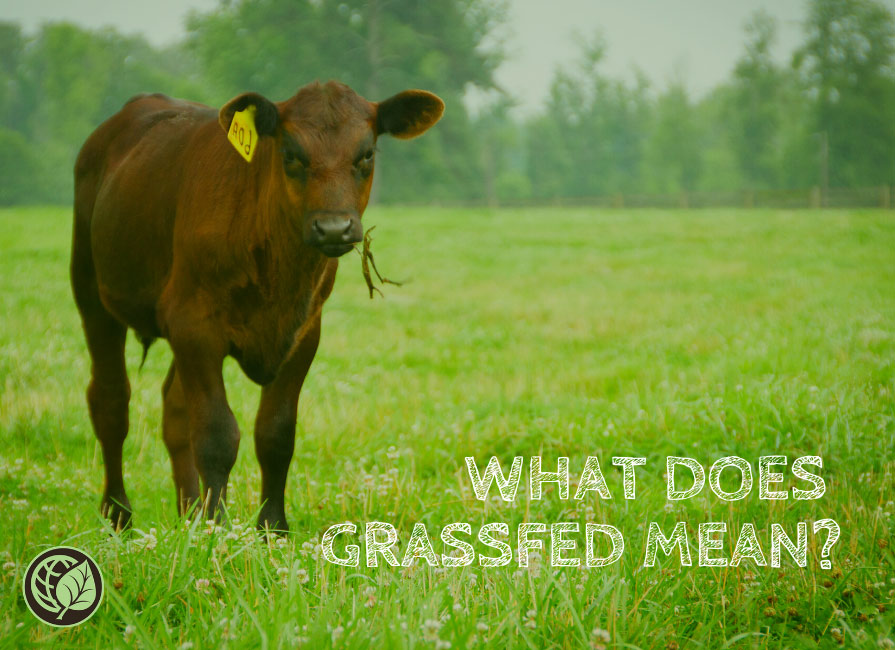One of the key attractions of our Certified Regenerative by AGW program is its practical…

What Is Grassfed?
Shopping for products that meet your values and expectations is not easy. With a little time and resources from trusted sources like us, you can learn how to decipher confusing food labels. In a recent blog post, we explored the meaning of “pasture-raised,” and provided guidance on how you can be assured that products you purchase come from animals that were raised outdoors on pasture and range.
Grassfed is another common claim used on meat and dairy products, and demand for it is skyrocketing. While it seems like a simple and straightforward food label, it can be quite confusing to determine if a product with a grassfed claim aligns with your values. Let’s take a look at some common questions about grassfed claims:
What is grassfed?
Grassfed is a diet-related claim, so it refers only to what the animals are fed during their lifetime, with the exception of milk prior to weaning. Cows, sheep, goats and bison are ruminants, which means that their digestive systems are most suited to eating grass and other plants.
Most ruminants, especially cattle, are raised using industrial practices and fed grain, so grassfed claims are often used to simply distinguish them from products that come from grain-fed animals. Unfortunately, grassfed claims don’t always mean what you think they mean.
Does grassfed mean 100% grassfed?
Sometimes, but not always. According to the United States Department of Agriculture (USDA),
“’Grass Fed’ or ‘100% Grass Fed’ claims may only be applied to meat and meat product labels derived from cattle that were only (100%) fed grass (forage) after being weaned from their mother’s milk…If incidental supplementation occurs due to inadvertent exposure to non-forage feedstuffs or to ensure the animal’s wellbeing at all times during adverse environmental or physical conditions, the producer should provide a signed and dated document to the establishment attesting the above incident is not a routine occurrence.”
The USDA does not restrict companies to only being 100% grassfed and will allow companies to make other diet and grassfed percentage claims based on documentation supplied with the label application—for example, “50% Grassfed, Finished on Pasture with Supplemental Grain Feeding.” While manufacturers must include the percentage of grass and forage fed somewhere on the label, this allowance adds to confusion about grassfed claims and leads to beef raised using industrial practices bearing a grassfed claim.
If a product is labeled grassfed, does that mean it is pasture-raised?
You cannot assume a grassfed claim means the animal was pasture-raised. Some products using grassfed claims permit the use of feedlots where animals are tightly confined. Unless there’s a third-party certification verifying animals were grassfed and pasture-raised (like Certified Grassfed by AGW), a simple grassfed claim does not provide an assurance that the product came from an animal raised on pasture.
Certified Grassfed by AGW is the only label to guarantee animals are raised outdoors on pasture or range, and have a 100% grass and forage diet. As a program, AGW’s definition of a grassfed product = 100% grassfed for life.
Does grassfed mean animals were treated better?
Not necessarily. Having a diet of grass does not mean that animals were treated differently than animals who are not fed a diet of grass. Some products marketed under grassfed claims permit practices like using growth hormones, unnecessary antibiotics, and confinement.
Certified Grassfed by AGW is the only grassfed certification that requires an animal welfare certification as well. Certified Grassfed by AGW products are also Certified Animal Welfare Approved by AGW, the only label that guarantees animals are raised outdoors on pasture or range for their entire lives on an independent farm using truly sustainable, high-welfare farming practices.
I’ve seen more and more dairy products labeled grassfed. Do the same regulations apply for grassfed dairy as for grassfed meat?
The USDA grassfed definition is specific to meat only, but there are increasing numbers of dairy products (from cattle, sheep and goats) marketed as grassfed without a clear definition of how animals are fed and managed. To be assured that those dairy products are actually grassfed and high-welfare, ask for an independently recognized third-party certification with publicly available welfare and environmental standards, like Certified Grassfed by AGW.
How do I learn more about Certified Grassfed by AGW and where to find certified products?
Certified Grassfed by AGW is the only certification and logo that guarantees products come from animals fed a 100% grass and forage diet, raised outdoors on pasture or range and managed according to the highest welfare and environmental standards on an independent farm. As an optional, additional accreditation to Certified Animal Welfare Approved by AGW producers, it is the only grassfed welfare label—and the only grassfed label that truly lives up to consumer expectations. To learn more about how it stacks up to other grassfed labels, see this Grassfed Comparison Chart.
To find certified products, visit our directory at https://agreenerworld.org/directory/.
—
To learn more about sustainable food and farming, sign up for our email list and follow us on social media. We are here to help! We believe our own health is connected to the health of animals, the environment, and our wider community. Our goal is to be your go-to resource for food, farming and sustainability and help you find simple solutions based on your own interest so you can shop with your values.
Want to become a food label expert?
A Greener World’s (AGW) Food Labels Exposed publication was developed to help you navigate and decipher today’s food labels and restaurant menus, providing clear and factual definitions for over 100 of the most common claims and terms used for the production, marketing and labeling of meat, dairy, eggs and other farmed products. This guide will help you find out what is really going on behind the label, so you can make informed choices.


